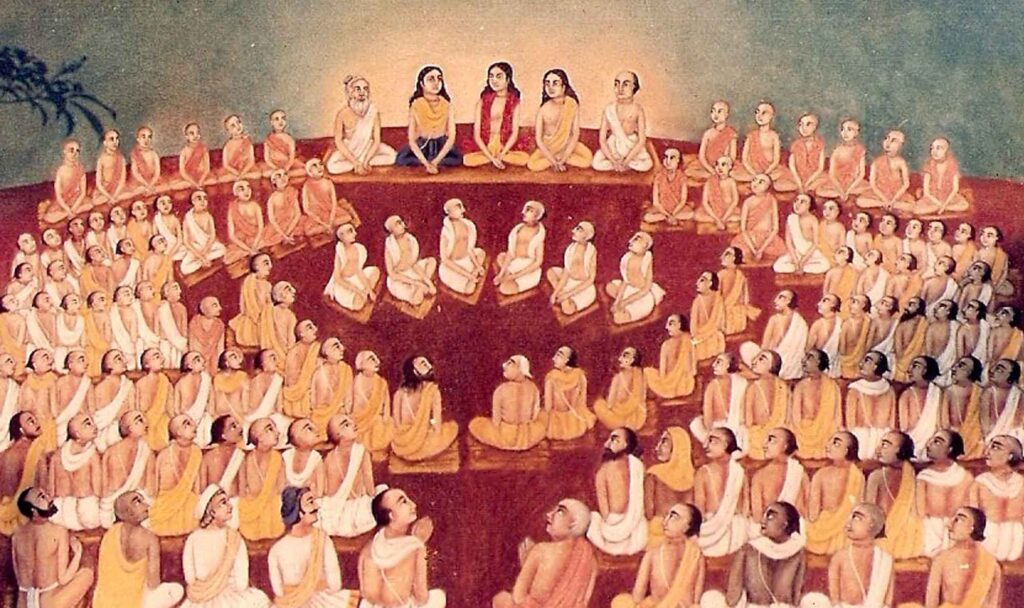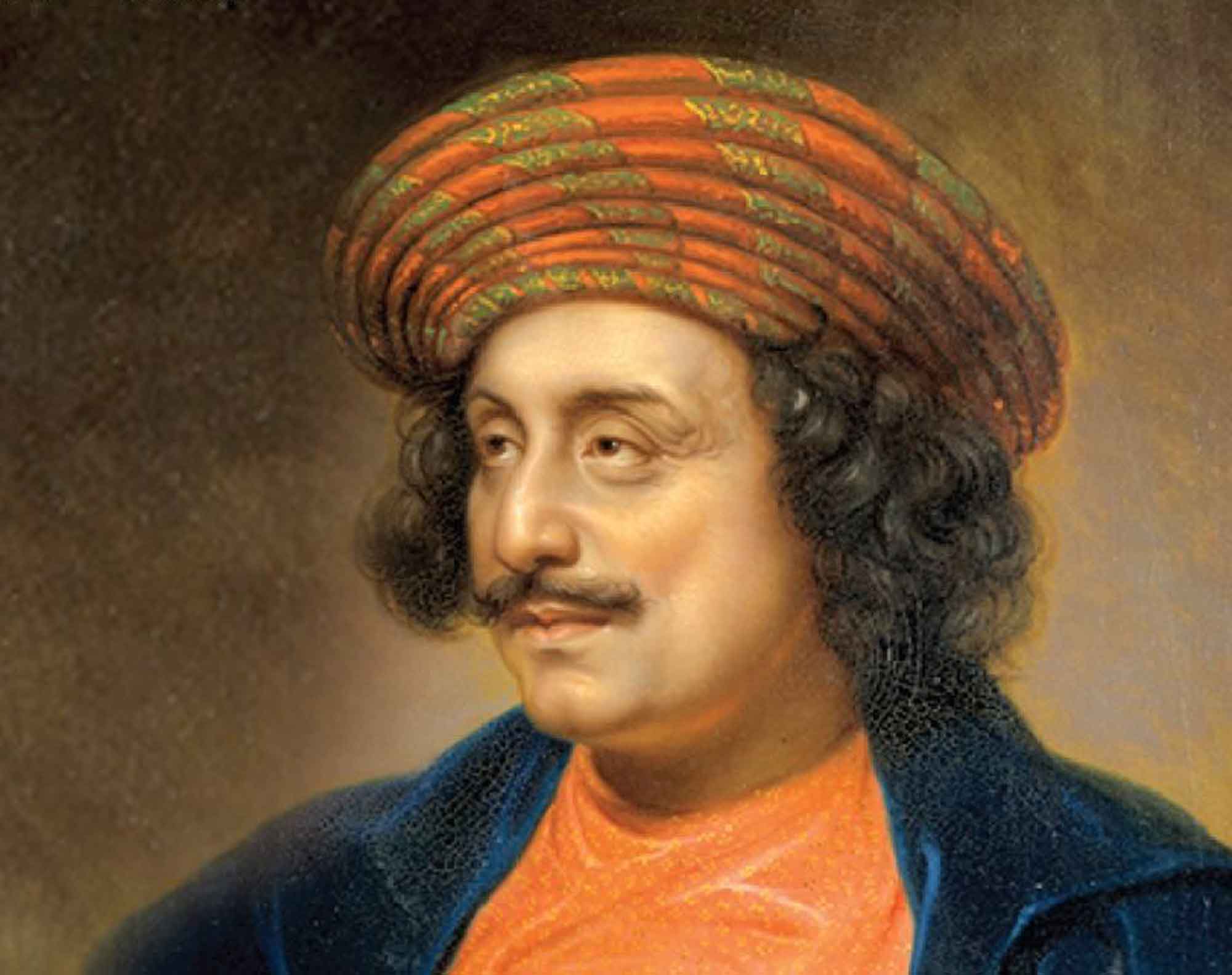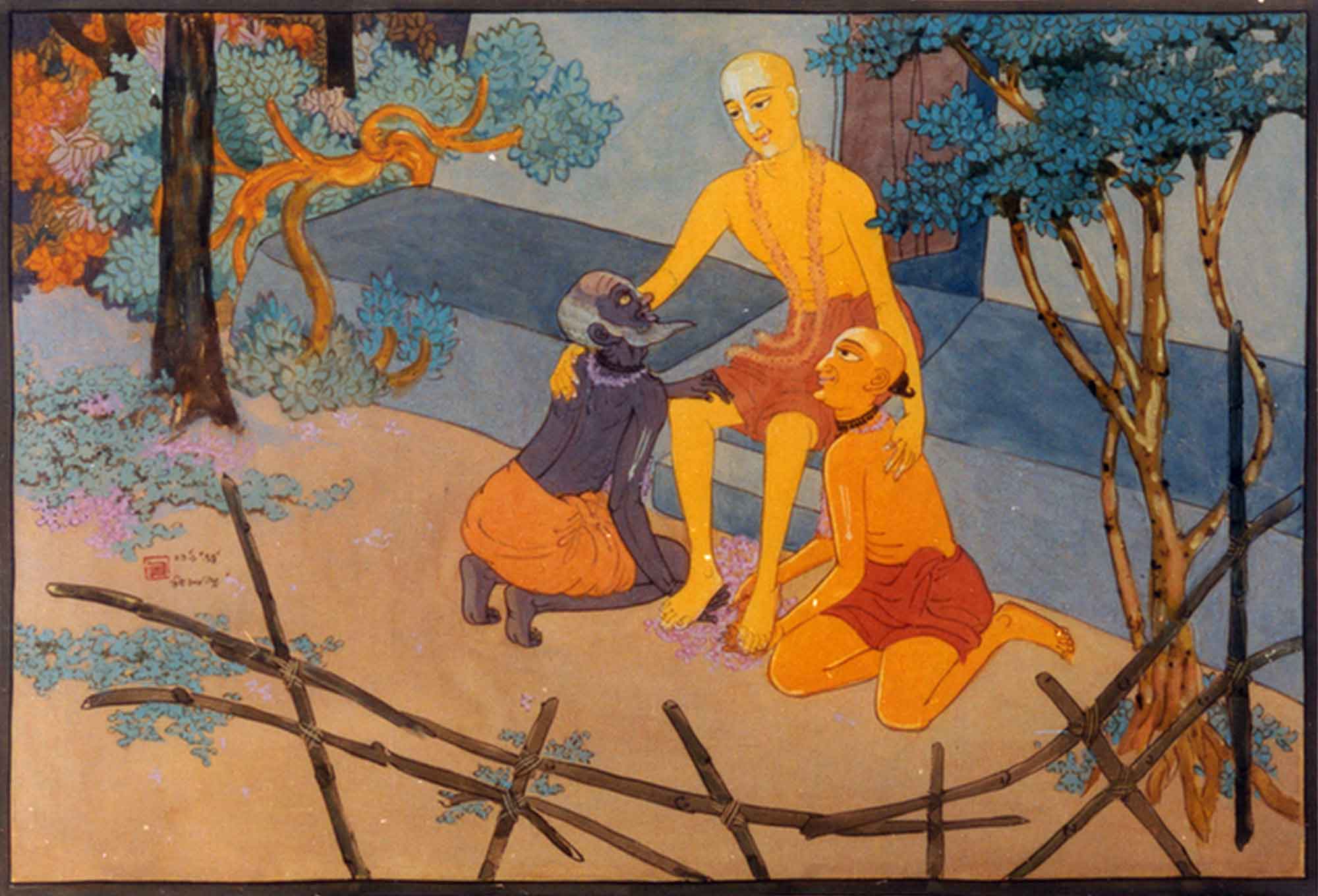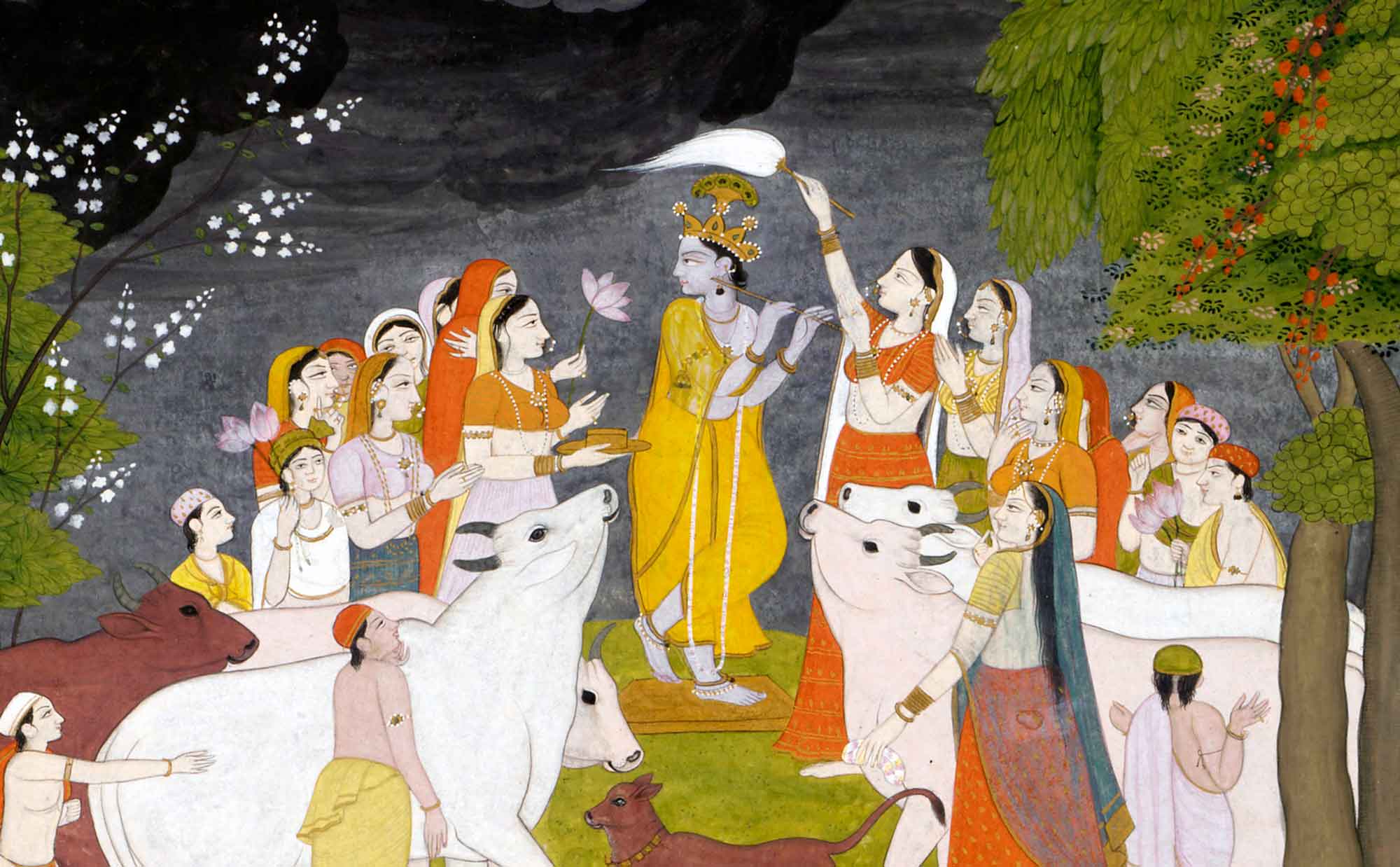Overview
‘Brāhmo Dharma Prakṛta Unnati' (Genuine improvement within Brahmo Dharma) was first published by Bhaktivinoda Ṭhākura in Sajjana Toṣaṇī Vol.2. issue 3 in 1885. In this article, the Ṭhākura rejoices in the news that the ācārya of the Brāhmos (a sect of impersonalists in Kolkata founded by Raja Ram Mohan Roy) is favouring the concept of prema over jñāna.
(translated by Swami B.V. Giri)
We have received a portion of a speech given by the ācārya mahāśaya of the Ādi Brāhmo Samāja on Sunday, 3rd of Caitra. In that discourse, the most scholarly ācārya mahāśaya said, “Sincere reverence for Parabrahma is very easy in terms of prema, and very difficult in terms of jñāna.” Ācārya mahāśaya‘s conception is excellent. He wants to say that it is difficult to attain Parabrahma by jñāna, and He is easily available through prema. Vaiṣṇava mahājanas have been saying this for a long time –
viśvāse pāibe kṛṣṇa tarke bahu dūra
(“Faith brings you to Kṛṣṇa, whereas logic takes you far away.”)
We see that Brāhmo dharma is gradually becoming more respectful towards prema than jñāna. This seems to be the real improvement in Brāhmo dharma. Now, one of our prayers concerning this is that the respected brāhmācāryas do not distort the eternal meaning of the words ‘prema’, ‘śraddhā’, ‘viśvāsa’, ‘jñāna’ and ‘dharma‘. The meaning of all these words causes a lot of confusion. They do not understand the difference between śraddhā in terms of prema, and śraddhā in terms of jñāna. The perception of a conscious object is called vedana. When that vedana reveals svarūpa-jñāna (knowledge of one’s intrinsic position) then that knowledge expands. When vedana reveals the rasa-jñāna (knowledge of rasa) of the viṣaya (the object of worship) then it expands as prema. The root of jñāna and prema is transcendence, it is one tattva. Śraddhā, meaning ‘having faith in transcendental subject matter’ (cinmaya-tattva), is the very sprout of that tree. Therefore, his statement that, “it becomes very easy in terms of prema to have faith in Parabrahma” becomes meaningless to a large extent.
We are very happy with the definitions of dharma that the ācārya mahāśaya has mentioned. He says that, “Just as the dharma of water is wetness, and the dharma of fire is brightness, so the dharma of an ātmā who is free from illusion, is the acquisition of supreme knowledge of reality and the desire to distribute pure prema.” We would say that just as the dharma of water is wetness, and the dharma of fire is heat, the dharma of a pure jīva is pure prema. When prema attains the state of becoming free from all material designations, then knowledge of reality culminates there and it is only nourished by prema. Knowledge of reality has no separate existence. In the conditioned state of the jīva, due to the duality of the spiritual world, it becomes necessary to have true knowledge of the connection between matter and spirit. But at the time when the ātmā becomes free from material connections, the necessity for true knowledge in regards to that connection ceases to exist. The intrinsic fundamental reality is that prema is self-effulgent. We will discuss all the details of this topic very soon.
In the way that Brahmo dharma is advancing, we fully hope that soon this dharma will become one with pure Vaiṣṇava dharma.













